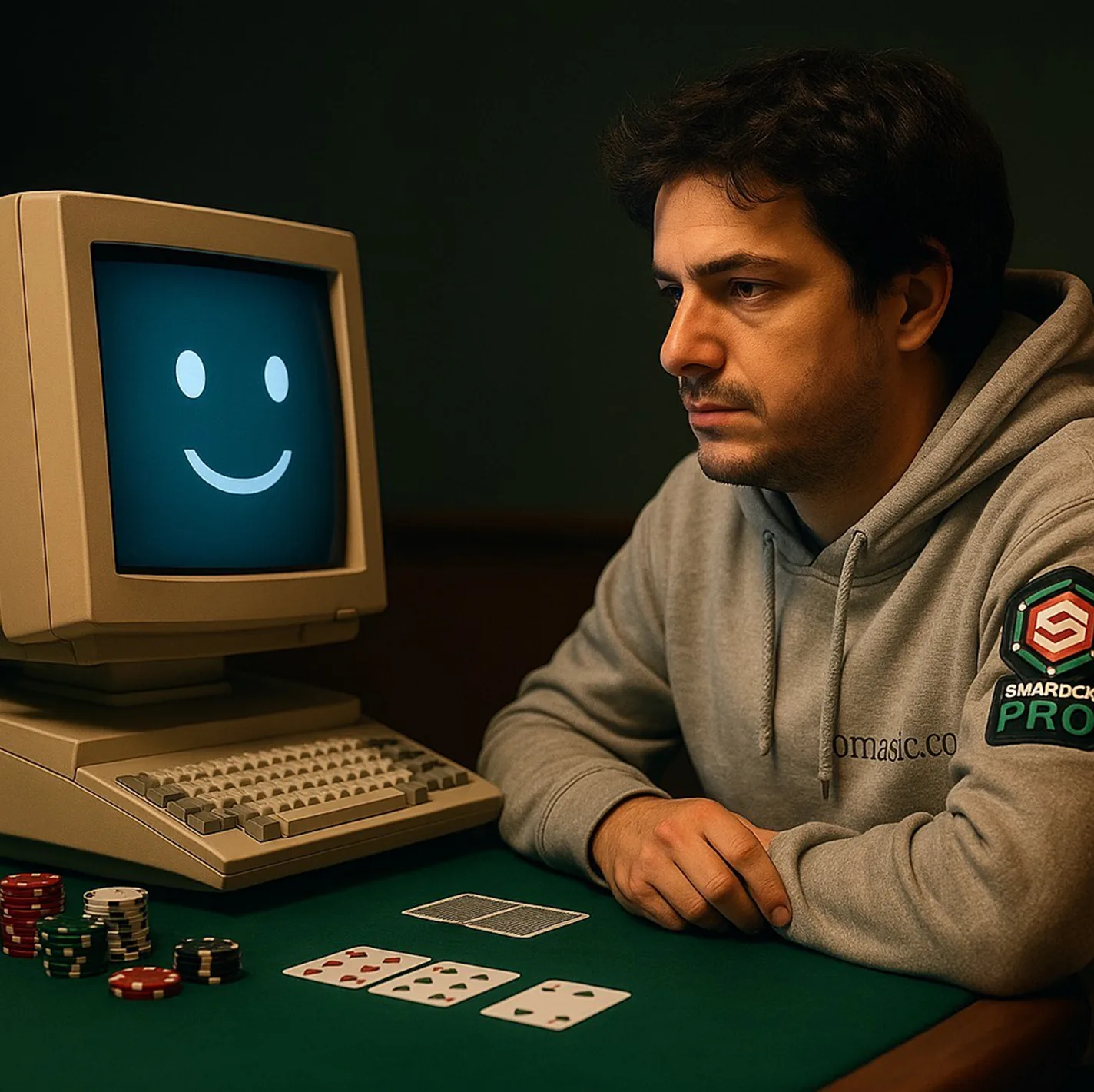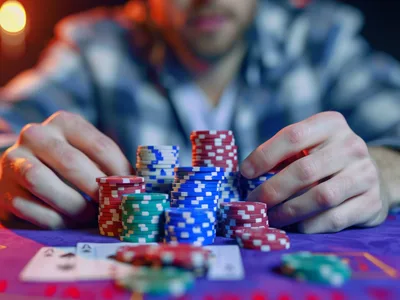In a recent video, ACR Poker featured online poker pro Enrico Camosci in his first-ever appearance at the prestigious Triton Poker Series $25K event in Monte Carlo, and boy did he show up in a big way. Camosci ended up final-tabling the event, where he pulled off one of the sickest bluffs of the year.
As a student of the game, what was fascinating about Enrico’s bluff is not just how creative it was, but how closely it mirrored a solver-approved strategy, something I was somewhat surprised to see when digging into the hand.
Let’s take a look at how the bluff played out and what Game Theory Optimal (GTO) strategy has to say about Enrico’s play.
The Setup: 18 Big Blinds, Blind vs. Blind
Sitting 3rd in chips with 4 left, Camosci found himself in a blind vs. blind battle with the chip-leader.
With 18 big blinds, Camosci looked down at T8o and decided to raise it, which he did to a size of more than 3x. The sizing, he said, was used to disincentivize speculative calls from his opponent. According to the solver, this hand prefers a limp 81% of the time. However, when it raises, it does prefer a bigger size, making Enrico’s choice a solver-approved mix.
The flop came QJ4 rainbow and Camosci followed it up with a small bet. Since the board favors the preflop aggressor, the solver agrees with both the bet and the sizing, making the same play roughly 70% of the time.
The turn brought the ace of hearts, putting two hearts on the board, and Enrico responded by firing out an unexpectedly small bet of just 3 big blinds into a 12-big-blind pot.
With the ace being a dominant card for the small blind’s range, the solver agrees with Enrico’s play and bets this turn at a high frequency. However, when it does bet, it does so almost exclusively using a half-pot sizing. In fact, it only uses a small sizing less than 1% of the time. One of the hands it does it with? You guessed it, T8o.
With the precision of a poker surgeon, Camosci’s line remains solver-approved.
Finally, the river brought an offsuit 4, pairing the board: QJ4A4

With nothing but a busted gutshot, and his tournament life on the line deep in a major, Enrico stuck to his story of strength with a big river bet, effectively going all in.
According to the solver, if Enrico had made the most often recommended bet of half pot on the turn, the river would be a pure give-up with T8, as he wouldn’t have enough chips left to get a fold. But of the few combos of T8 that it did bet small on the turn with, the solver makes the same choice as Enrico a third of the time and shoves the river.
That makes it three streets of aggression, executed with precision, all falling within the boundaries of optimal solver play.
If there was one mistake in the hand, it came from Enrico’s opponent Alex Theologis, who folded Q9s on the river, a hand the solver calls at 100% frequency. In fact, there is not a single Qx hand in the solver’s range that folds this spot. Even with its Jx hands, the solver calls more than 50% of the time!
With that said, let’s not forget that solvers don’t exist in the real world. This is high stakes. It’s live reads. It’s ICM pressure. It’s the weight of the moment. For all we know, Theologis may have folded based on something no computer could see.
Still, when it mattered most, Camosci showed that the instincts he developed battling on ACR poker can translate into the highest levels of live poker success.
How far did Enrico’s gutsy bluff take him? Tune in and sweat the action to find out:

